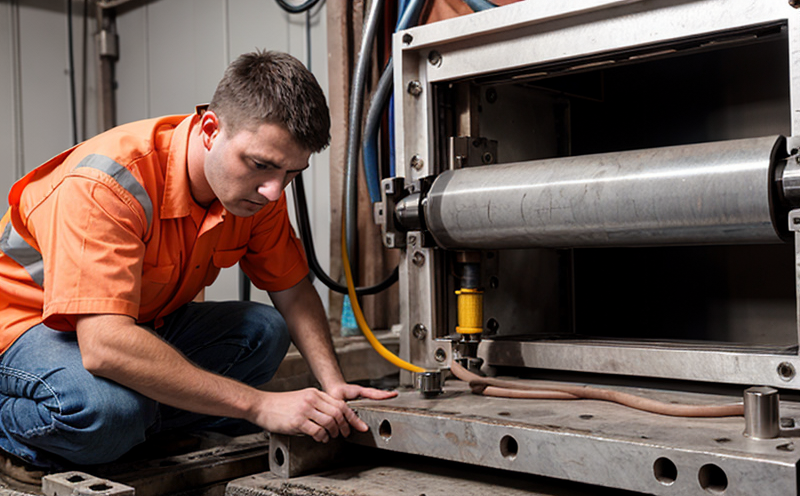IEC 60695 Fire and Flame Safety Testing of Lighting Fixtures
The International Electrotechnical Commission (IEC) standard IEC 60695-11:2014 is a crucial document that outlines the testing procedures for determining the flammability characteristics of lighting fixtures. This test assesses how likely the material used in the fixture will ignite and continue burning under certain conditions, ensuring consumer safety from fire hazards.
The standard applies to various types of lighting fixtures including lamps, luminaires, and other similar devices. It is particularly important for those products that are exposed to heat sources or have components made from materials prone to catching fire. The test aims to evaluate the performance of both the fixture itself as well as its internal and external materials when subjected to specified temperatures and ignition sources.
The testing process involves exposing a sample of the lighting fixture to different types of flames for specific durations, depending on the type of flame used (gas, oil, etc.). After exposure, the samples are observed for signs of continued burning or self-extinguishing behavior. Compliance with this standard ensures that any potential fire risks associated with the use of the product are minimized.
For accurate and reliable testing results, it is essential to follow all prescribed procedures meticulously. This includes proper specimen preparation according to IEC 60695-11 requirements, ensuring consistent temperature control during testing, and using appropriate flame sources that meet international standards. The laboratory performing these tests must be equipped with specialized equipment capable of replicating real-world scenarios accurately.
The importance of adhering strictly to this standard cannot be overstated; compliance helps manufacturers avoid costly recalls due to safety concerns while also protecting consumers from potential injuries or property damage caused by faulty products. By ensuring that all lighting fixtures meet the stringent requirements set forth in IEC 60695-11, companies demonstrate their commitment to producing safe and reliable products.
Understanding how to interpret test results correctly is equally important for quality managers responsible for maintaining high standards within their organizations. They should familiarize themselves with what constitutes acceptable versus unacceptable outcomes based on the criteria outlined in IEC 60695-11.
Why It Matters
The safety of consumers is paramount, especially when dealing with products like lighting fixtures that are often used in close proximity to sources of heat and electricity. Ensuring compliance with standards such as IEC 60695-11 helps protect against fires caused by defective materials or improper design choices.
- Maintains public safety by reducing the risk of fire incidents
- Protects consumers from potential injuries or property damage
- Ensures manufacturers meet regulatory requirements and avoid costly recalls
- Improves brand reputation through consistent adherence to industry best practices
- Enhances trust between suppliers, customers, and regulators
In today's competitive market, demonstrating a strong commitment to safety can give businesses an edge over competitors. Compliance with international standards like IEC 60695-11 not only meets legal obligations but also enhances credibility among stakeholders.
Why Choose This Test
The decision to conduct IEC 60695-11 fire and flame safety testing should be made based on several key factors:
- Regulatory Compliance: Many countries require compliance with international standards for electrical products, including lighting fixtures. Meeting these requirements ensures that your product can enter the market legally.
- Risk Management: By identifying and addressing potential fire risks early on in the development process, you reduce the likelihood of costly recalls later down the line.
- Customer Trust: Consumers increasingly expect manufacturers to prioritize safety above all else. Demonstrating your commitment to this through testing adds value to both existing customers and new ones looking for reliable products.
- Innovation Opportunity: Testing according to recognized standards opens doors for innovation by allowing you to stay ahead of trends in material science and design that could lead to safer, more efficient lighting solutions.
- Competitive Advantage: In a crowded market, showing compliance with rigorous safety testing can differentiate your product from competitors who may not be as proactive about addressing fire hazards.
Choosing IEC 60695-11 fire and flame safety testing is therefore not just an option but a necessity for companies serious about protecting their reputation and ensuring the well-being of end-users.
Competitive Advantage and Market Impact
Adopting IEC 60695-11 fire and flame safety testing offers significant advantages in terms of competitive positioning within the lighting fixture industry:
- Innovation Leadership: By staying ahead of regulatory changes and trends, you demonstrate leadership in the field. This can help attract investment from stakeholders who recognize your forward-thinking approach.
- Enhanced Brand Image: Consistently meeting or exceeding safety standards enhances brand perception among consumers and industry peers alike. A reputation for quality and reliability is crucial for long-term success.
- Better Customer Relationships: Showing due diligence in ensuring product safety strengthens relationships with customers who value peace of mind when purchasing electrical goods. It also fosters loyalty, which translates into repeat business opportunities.
- Increased Market Share: Compliance with international standards can open up new markets where specific regulations are enforced. This expansion strategy allows companies to tap into growing demand segments without compromising on safety standards.
- Longevity of Product Lifecycle: Ensuring that your product meets stringent testing criteria helps extend its useful life, reducing waste and contributing positively to environmental sustainability efforts.
The broader impact extends beyond individual firms; it contributes to safer communities globally by promoting responsible manufacturing practices across the sector. As a leader in this area, you play an important role in shaping industry norms towards greater emphasis on safety.





